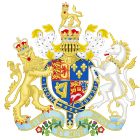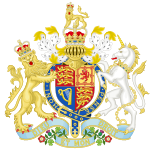- Murder Act 1751
-
Murder Act 1751[nb 1] 
Parliament of Great BritainLong title An act for better preventing the horrid crime of murder. Statute book chapter 25 Geo.2 c. 37 Dates Repeal date 18 July 1973[nb 2] Other legislation Repealing legislation Statute Law (Repeals) Act 1973, s.1(1) & Sch.1, Pt.V[nb 3] Status: Repealed The Murder Act 1751 (25 Geo.2 c.37) was an Act of the Parliament of the Kingdom of Great Britain.
Contents
Provisions
The Murder Act included the provision "for better preventing the horrid crime of murder"[1] "that some further terror and peculiar mark of infamy be added to the punishment",[2][3] and that "in no case whatsoever shall the body of any murderer be suffered to be buried",[1] by mandating either public dissection or "hanging in chains" of the cadaver.[4] The act also stipulated that a person found guilty of murder should be executed two days after being sentenced unless the third day was a Sunday, in which case the execution would take place on the following Monday.[5]
Section 9
This section provided that any person who, by force, set at liberty or rescued, or who attempted to set at liberty or rescue, any person out of prison who was committed for, or convicted of, murder, or who rescued or attempted to rescue, any person convicted of murder, going to execution or during execution, was guilty of felony, and was to suffer death without benefit of clergy. This death penalty was reduced to transportation for life by the Punishment of Offences Act (1837).
See also
References
- Notes
- ^ This short title was conferred by the Short Titles Act 1896, section 1 and the first schedule. Some sources refer to the Act as the Murder Act 1752, this being the year in which it was passed.
- ^ The repealing provision came into force on the date of royal assent because the contrary was not specified.
- ^ This is referred to by the Law Commission,Criminal Law, Repeal Proposals, January 2005, p. 52
- Citations
- ^ a b Dr D.R.Johnson, Introductory Anatomy, Centre for Human Biology, (now renamed Faculty of Biological Sciences, Leeds University), Retrieved 2008-11-17
- ^ Ross Harrison, Bentham, Routledge, 1983, ISBN 0710095260, 9780710095268 p. 6
- ^ Stuart Banner, Death Penalty: An American History, Harvard University Press, 2003 ISBN 0674010833, 9780674010833. p.77
- ^ Gregory D. Woods (2002). A History of Criminal Law in New South Wales: The Colonial Period, 1788-1900, Federation Press, ISBN 1862874395, 9781862874398. 122
- ^ Fielding 2008, p. 5
- Bibliography
- Fielding, Steve (2008), The Executioner's Bible: The Story of Every British Hangman of the Twentieth Century, John Blake Publishing, ISBN 978-1-84454-648-0
Further reading
- Marks, Alfred (1908). Tyburn tree : its history and annals, London : Brown, Langham pp. 247–48
United Kingdom legislation Pre-Parliamentary legislation Acts of Parliament by states preceding
the Kingdom of Great BritainActs of the Parliament of England to 1483 · 1485–1601 · 1603–1641 · Interregnum (1642–1660) · 1660–1699 · 1700–1706
Acts of the Parliament of Scotland
Acts of the Parliament of Ireland to 1700 · 1701–1800Acts of Parliament of the
Kingdom of Great Britain1707–1719 · 1720–1739 · 1740–1759 · 1760–1779 · 1780–1800
Acts of Parliament of the United Kingdom of
Great Britain and Ireland and the United
Kingdom of Great Britain and Northern IrelandChurch of England Measures Legislation of devolved institutions Acts of the Scottish Parliament
Acts and Measures of the Welsh Assembly
Acts of the Northern Ireland Assembly / of the Northern Ireland Parliament
Orders in Council for Northern IrelandSecondary legislation Categories:- 1751 in law
- Murder in the United Kingdom
- 1751 in Great Britain
- Acts of the Parliament of Great Britain
Wikimedia Foundation. 2010.

